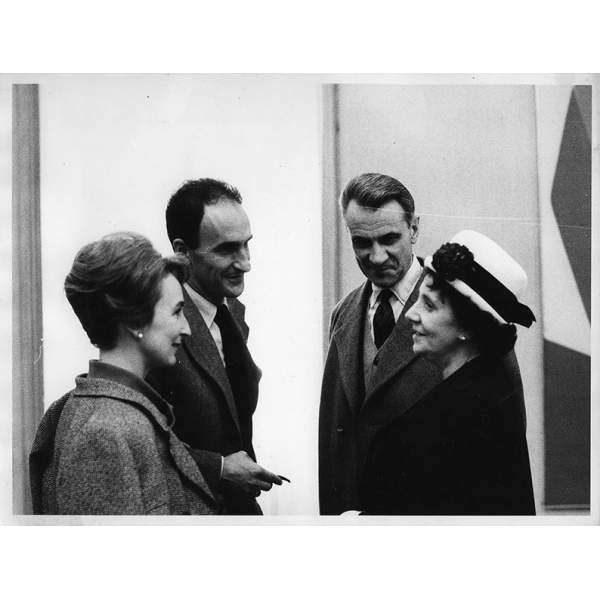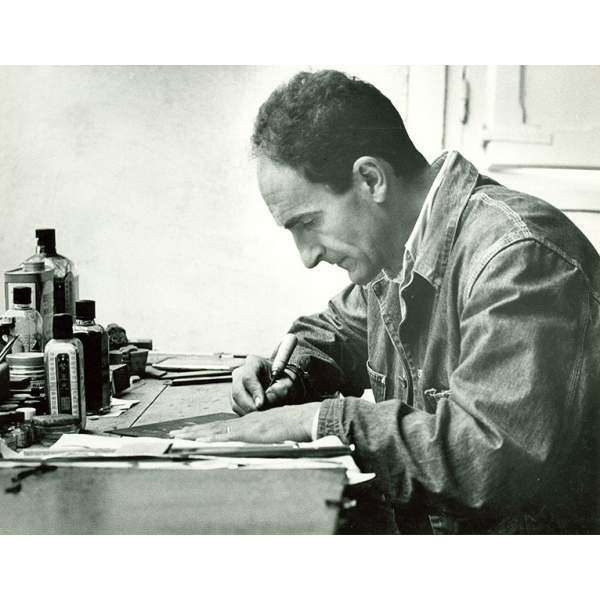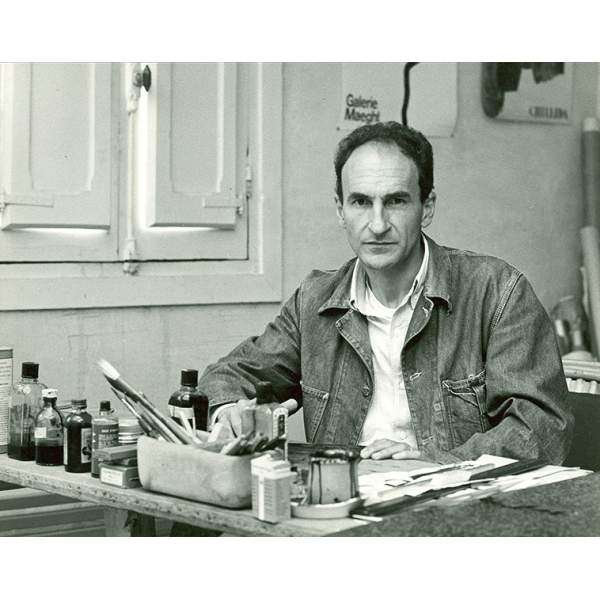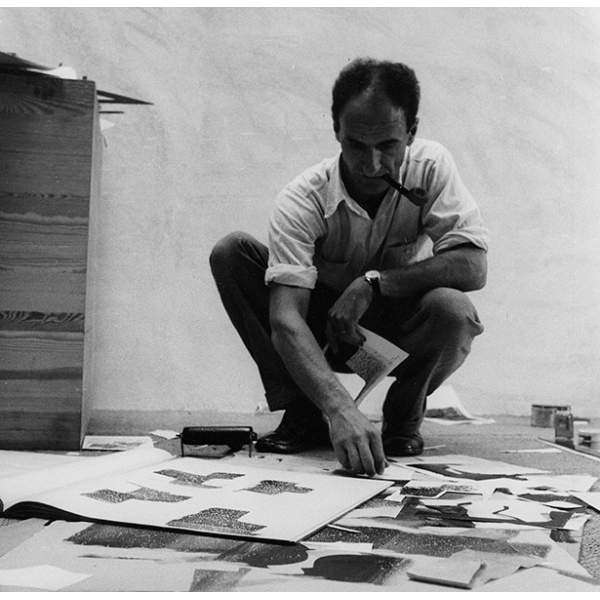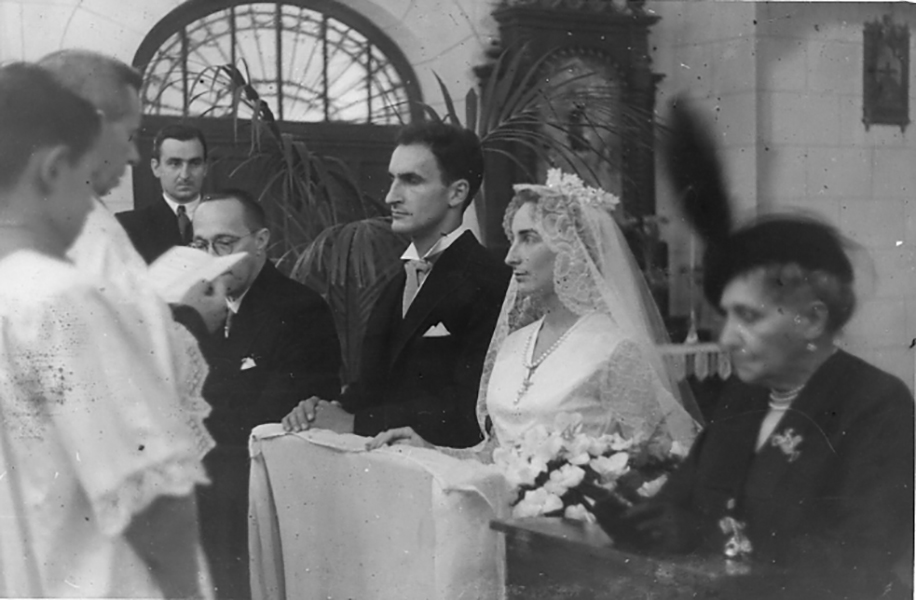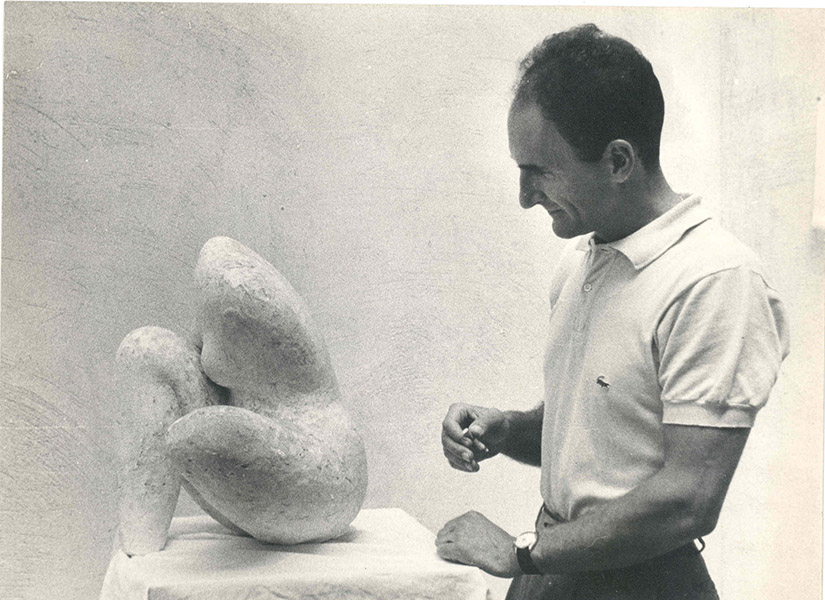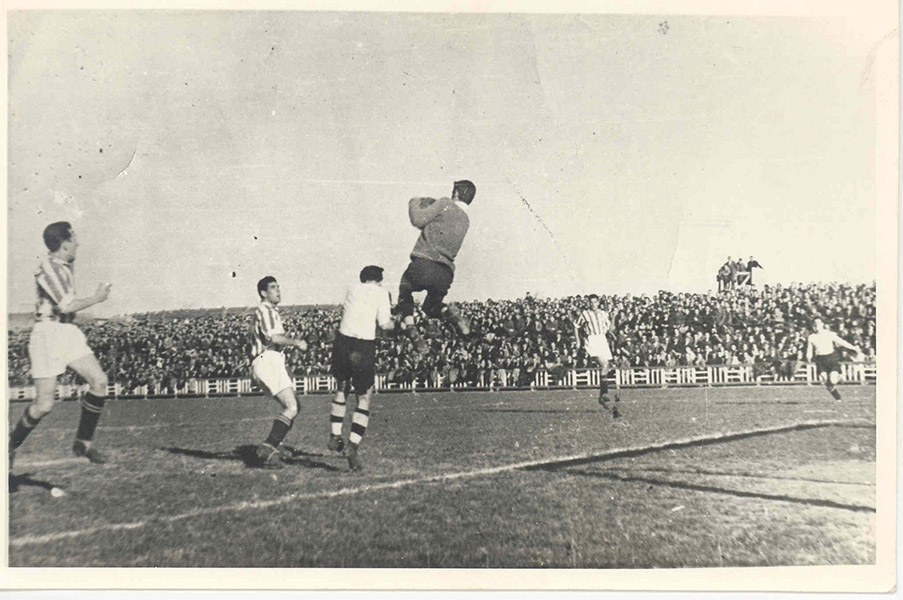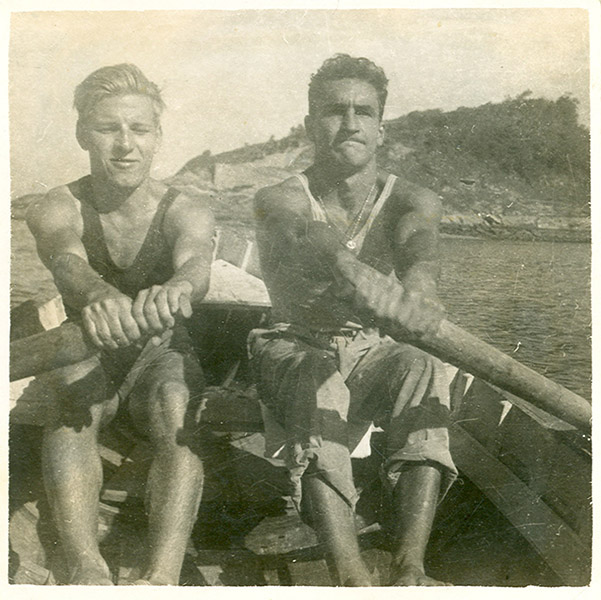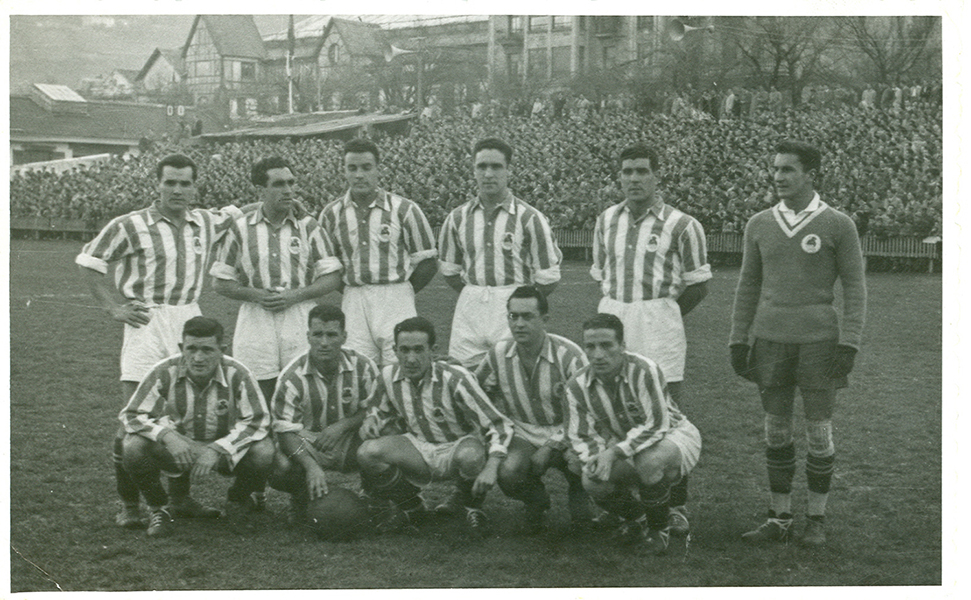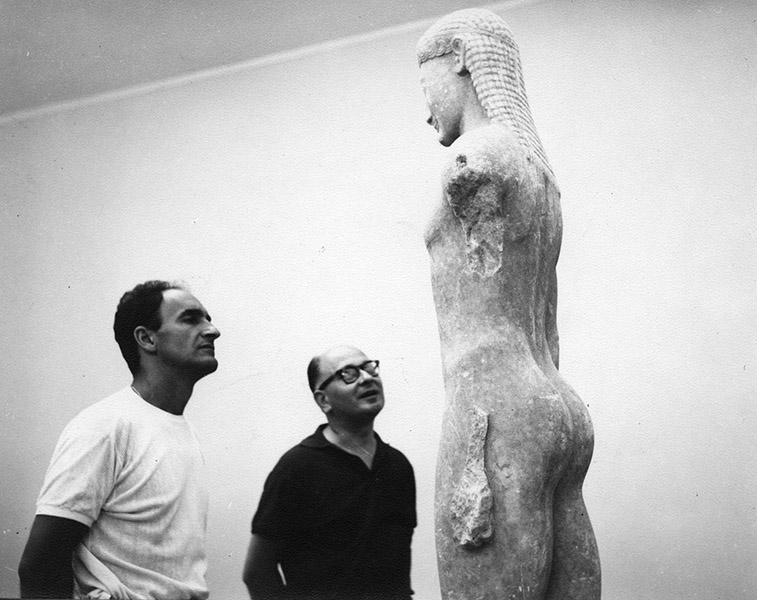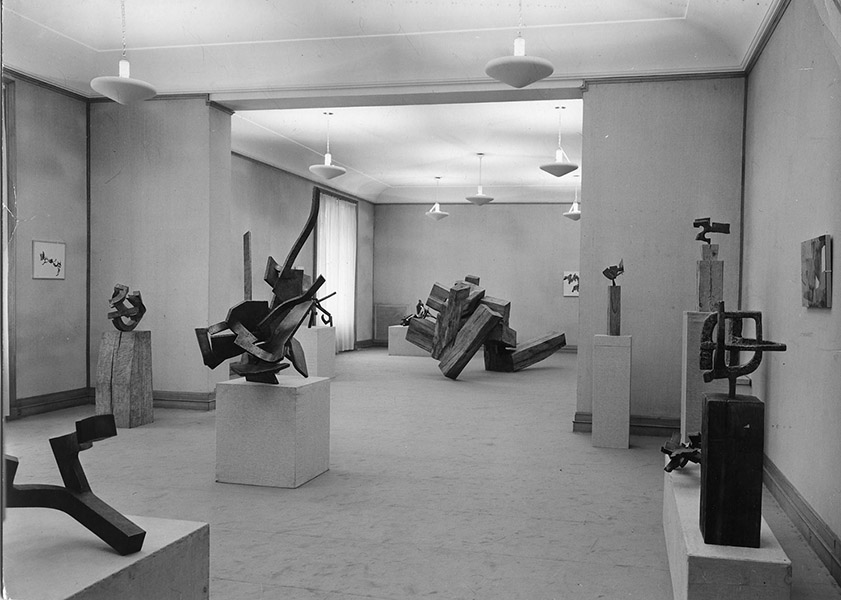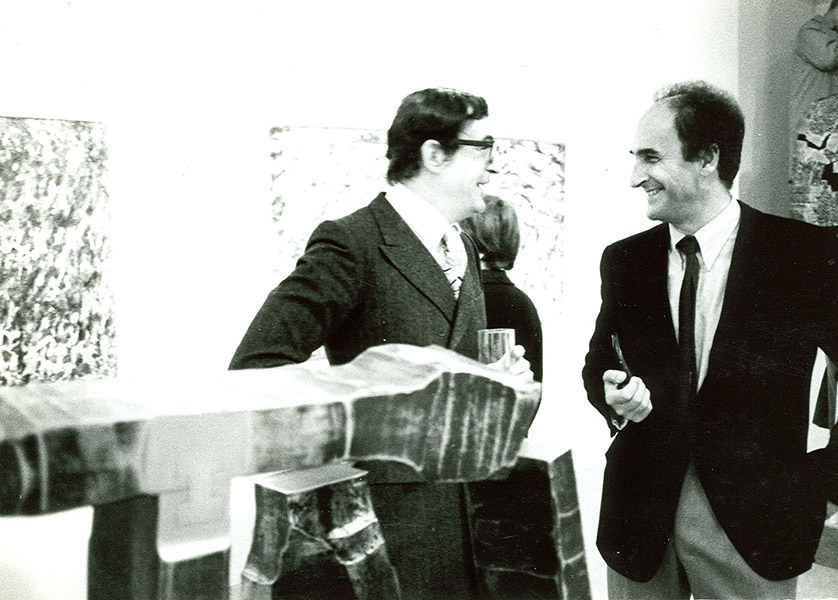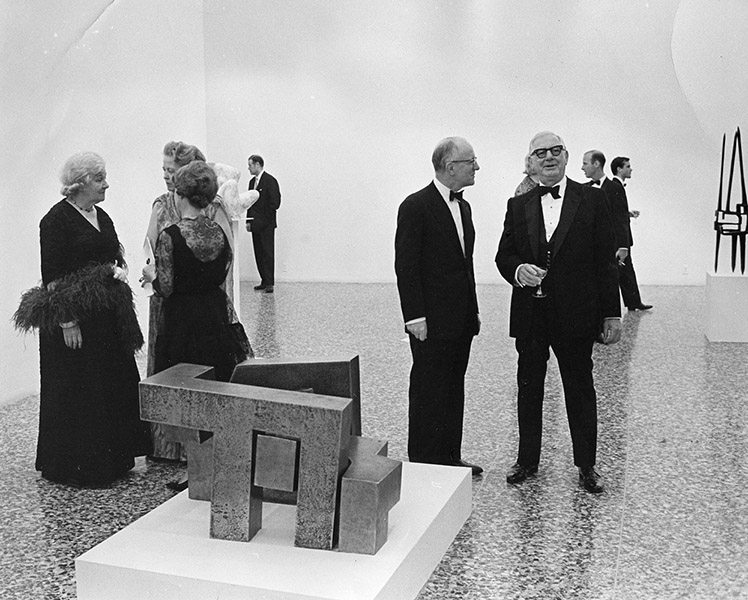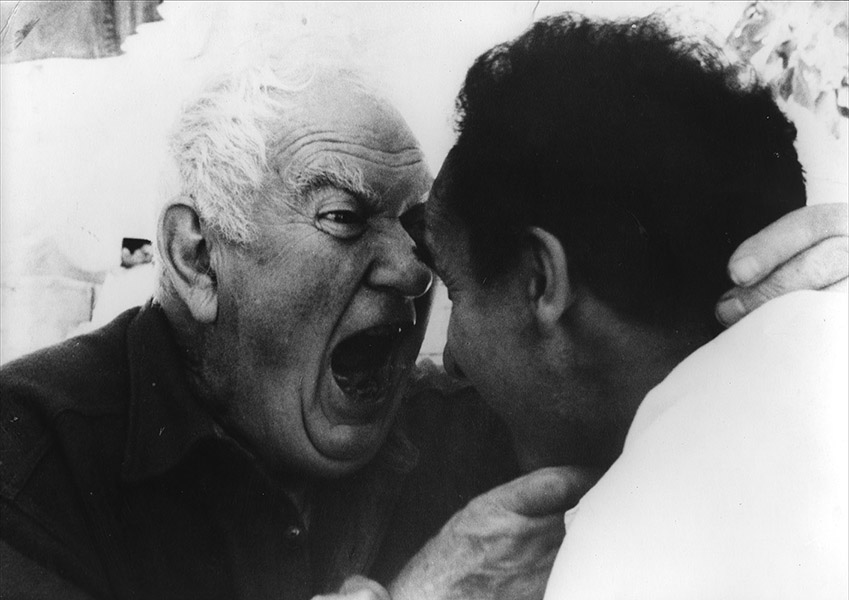Photobiography
1951 - 1960
1951
The first of his eight children, Guiomar, was born.
In October, the couple settled in the Basque Country permanently and moved into Vista Alegre, a house belonging to an aunt of Eduardo’s, in the Florida neighbourhood of Hernani (Gipuzkoa).
He began working at Manuel Illarramendi’s forge, with Paco Celarain and Agustín Arrieta as helpers.
Many of the works created in Paris were broken during the journey back home: some torsos, bodies, a rider, and Metamorfosis.
In November, he created his first iron piece, Ilarik [Stele] using cow horn dust to avoid rusting.
1952
José Cruz Iturbe became his helper at the new forge he set up in the garage of Vista Alegre. Together they would go in search of puddled iron through Gipuzkoa’s scrapyards.
He started using rural tools such as pitchforks and axes to form his sculptures.
He created his first collages and Peine del viento I [Comb of the Wind I] - the first sculpture of the series - today at the Museo Nacional Centro de Arte Reina Sofía, Madrid.
The couple continued to visit Paris frequently in spite of having settled down in Hernani.
His son Pedro was born.
1953
His brother Ignacio died in a motorcycle accident.
He created Contrapunto, a relief resembling a collage made of hoes.
This year saw him continue to utilise industrial and rural objects to create sculptural pieces.
1954
His son Ignacio was born in May, and Carmen, his mother, died in December.
He received a honourable mention at the X Triennale di Milano, to which he was invited by the architect Ramón Vázquez Molezún.
He held his first solo exhibition of sculptures, drawings, and collages at the Galería Clan in Madrid, run by José Antonio Llardent.
Desde dentro [From Within] was exhibited at Le Premier Salon de la sculpture abstraite, at the Galerie Denise René in Paris.
He fabricated the four doors for the Sanctuary of Arantzazu. The Director of the Kunsthalle Bern, Arnold Rüdlinger, visited his workshop in Hernani.
1955
The City Council of San Sebastián commissioned a sculpture in homage to Alexander Fleming. He created Monumento a Fleming [Monument to Fleming], in stone, which is placed at the Bicentennial Balcony of La Cocnha, San Sebastian.
Some of the works selected by Arnold Rüdlinger in Hernani the previous year were exhibited at the Kunsthalle Bern.
His daughter Carmen was born.
He created Espíritu de los pájaros II [Spirit of the Birds], which allowed for two positions, a static one supported on three points, and a hanging one. He also produced Hierros de temblor I [Trembling Irons I] - where he cut iron sheets for the first time - and Música de las esferas I [Music of the Spheres].
1956
His father Pedro passed.
First solo exhibition at the Galerie Maeght in Paris, with 27 sculptures. Gaston Bachelard wrote «Le cosmos du fer», for Derrière Le Miroir, about these wrought iron pieces. The sculptor would dedicate a piece to the French philosopher.
He made, for the first and last time, three bronze replicas.
1958
He exhibited 18 sculptures at the XXIX Biennale di Venezia Spanish Pavilion and was awarded the Gran Premio Internationale per la Scultura.
He then participated in the 3ª Mostra dei Pittori e Scultori Premiati alla Biennale d’Arte di Venezia, at the Palazzo delle Nazioni della Fiera di Messina.
Also featured in the 1958 Pittsburgh International Exhibition of Contemporary Painting and Sculpture at the Carnegie Institute in Pittsburgh, who acquired the work Aizian [In the Wind].
He participated in the exhibition Sculptures and Drawings from Seven Sculptors, at the Solomon R. Guggenheim Museum in New York, where he struck up a friendship with its Director, James Johnson Sweeney, and the musician Edgar Varèse.
José Guerrero, Wilfredo Lam, Norbert Kricke and Chillida exhibited at the Graham Foundation in Chicago after being awarded the Graham Foundation Award for Advanced Studies in the Fine Arts.
He met Frank Lloyd Wright.
His daughter Susana was born.
1959
He wass featured in the Inaugural Selection at the Solomon R. Guggenheim Museum in New York and the II documenta in Kassel.
He also participated in EUROPEAN ART TODAY: 35 Painters and Sculptors at the Minneapolis Institute of Arts, which then travelled to other cities in North America.
He printed his first etchings.
1960
He received the Prix Kandinsky, awarded by the artist’s widow, Nina Kandinsky.
His work was featured in New Spanish Painting and Sculpture at the Museum of Modern Art in New York.
His daughter María was born.
He became friends with Alberto Giacometti.
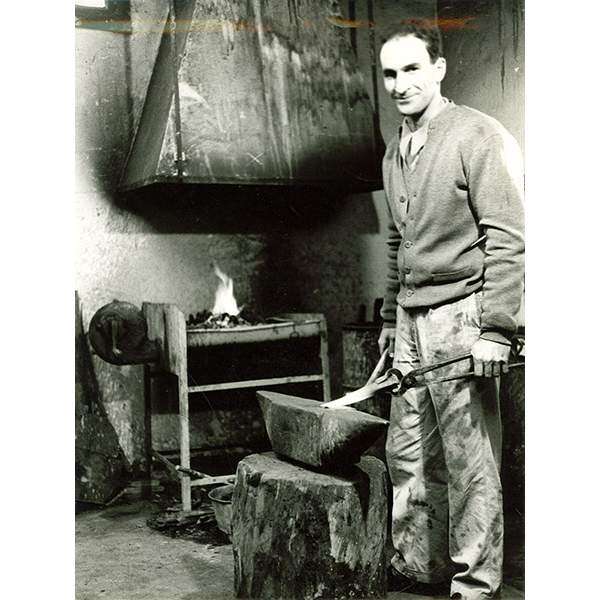
![His first iron sculpture, Ilarik [Stele]](/sites/default/files/styles/600x600/public/chillida_biografia_019.jpg?itok=us0NkVgq)
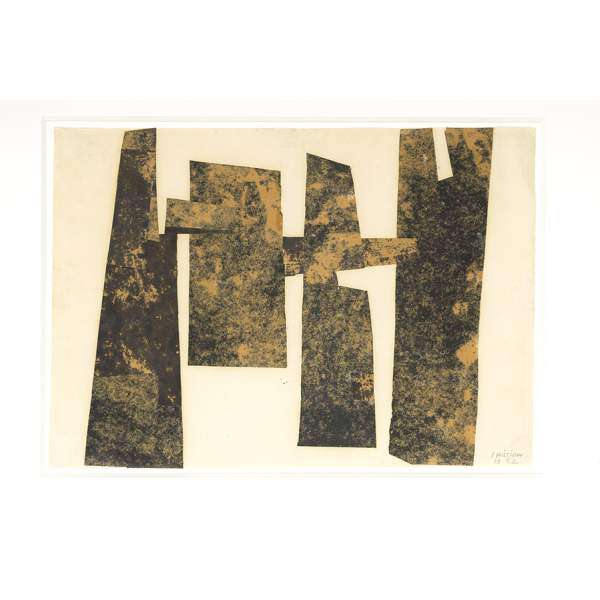
![Estudio Peine del Viento I [Study for Comb of the Wind I]](/sites/default/files/styles/600x600/public/chillida_biografia_022.jpg?itok=KFKO9ifC)
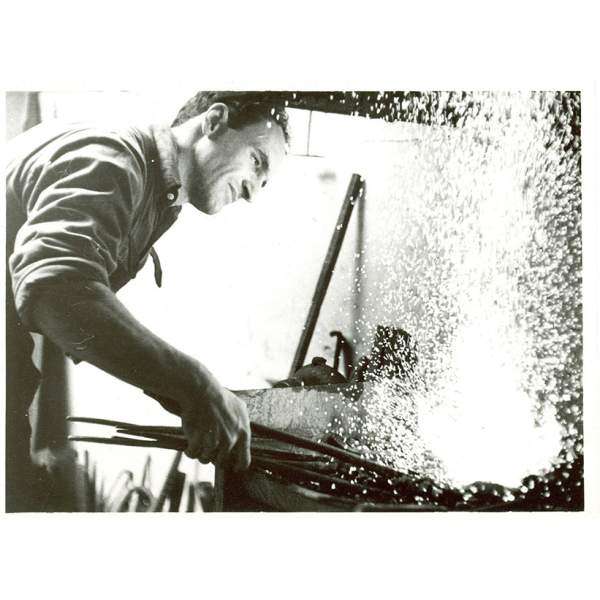
![Homenaje a Vivaldi I [Homage to Vivaldi I]](/sites/default/files/styles/600x600/public/chillida_biografia_027.jpg?itok=Oje2Qcx1)
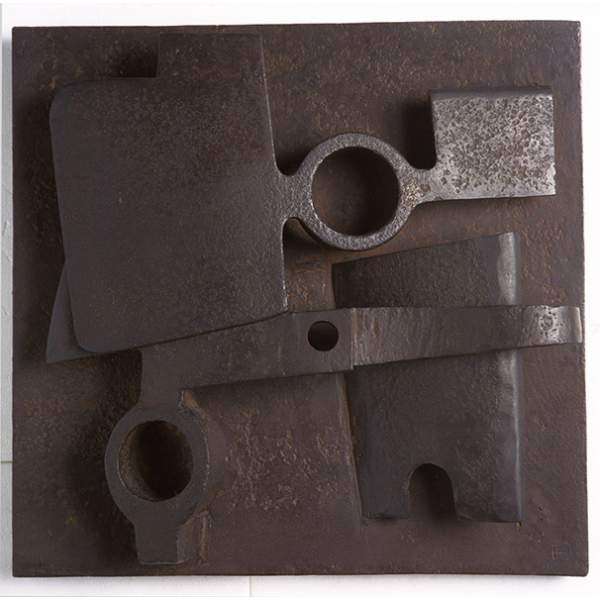
![The piece Espacios perforados I [Perforated Spaces I] at the X Triennale di Milano](/sites/default/files/styles/600x600/public/chillida_biografia_024.jpg?itok=6LdbEQ12)
![Next to Tres I [Three I] at the X Triennale di Milano](/sites/default/files/styles/600x600/public/chillida_biografia_025.jpg?itok=IC9VecZv)
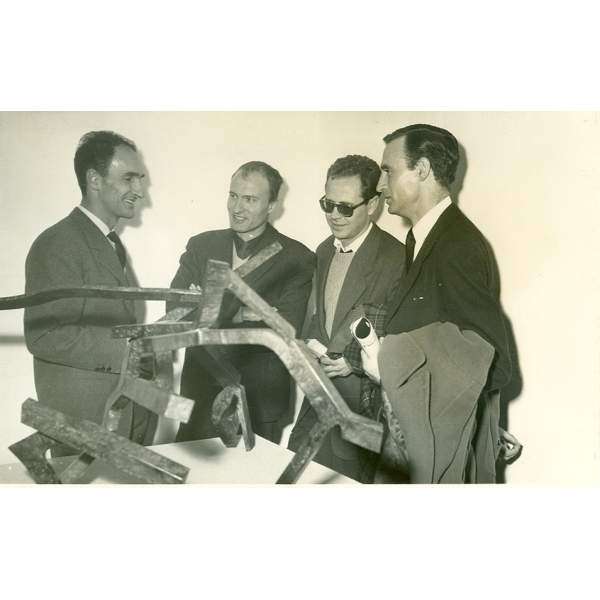
![Desde dentro [From Within]](/sites/default/files/styles/600x600/public/chillida_biografia_028.jpg?itok=9xNil0ca)
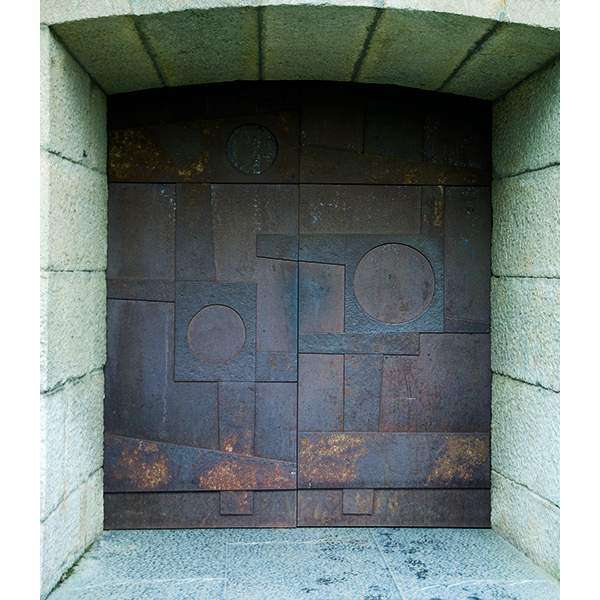
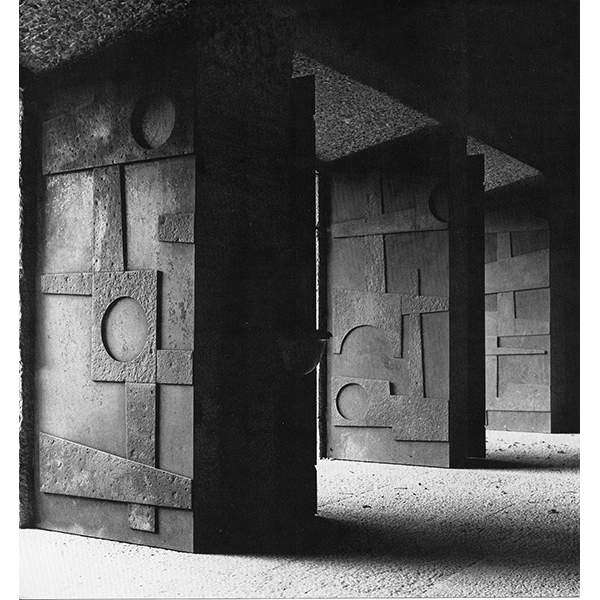
![Monumento a Fleming [Monument to Fleming] (1st version)](/sites/default/files/styles/600x600/public/chillida_biografia_031.jpg?itok=Rjk78xlL)
![Espíritu de los pájaros II [Spirit of the Birds II]](/sites/default/files/styles/600x600/public/chillida_biografia_032.jpg?itok=hshM1j_w)
![Hierros de temblor I [Trembling Irons I]](/sites/default/files/styles/600x600/public/chillida_biografia_033.jpg?itok=ZLd0VMII)
![Música de las esferas I [Music of the Spheres I]](/sites/default/files/styles/600x600/public/chillida_biografia_034.jpg?itok=hn1FKLMx)
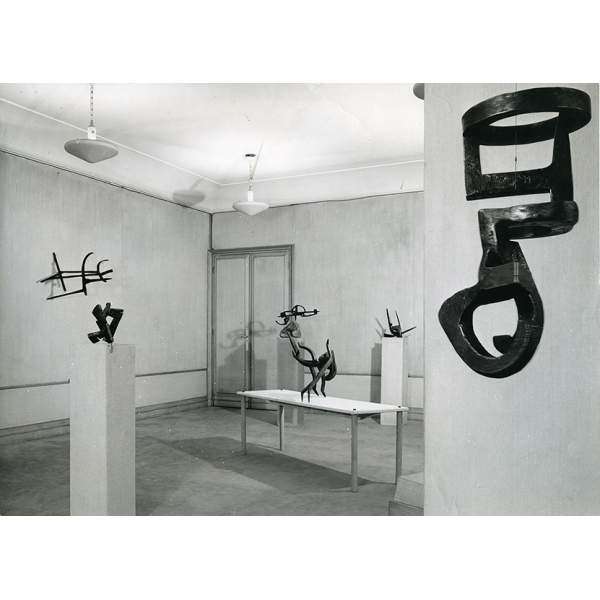
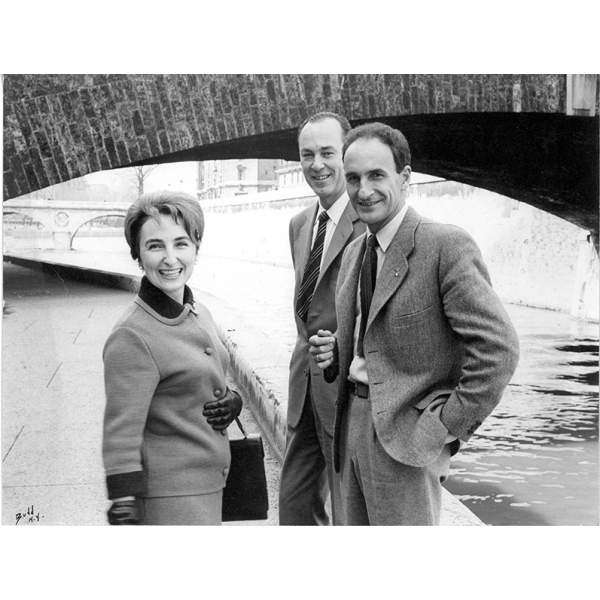
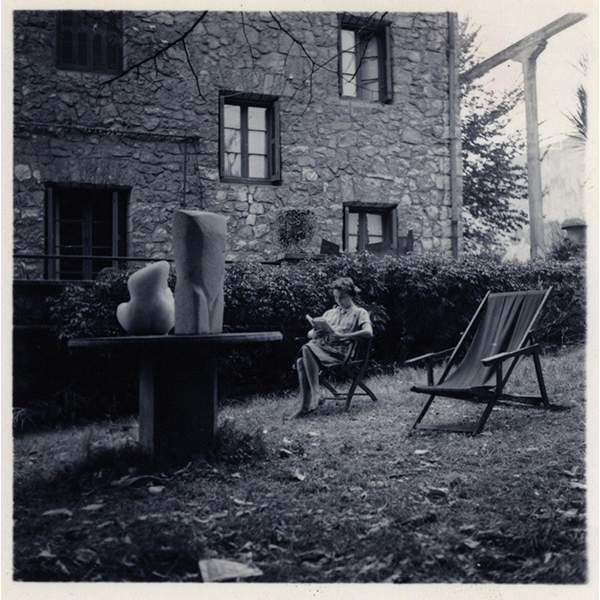
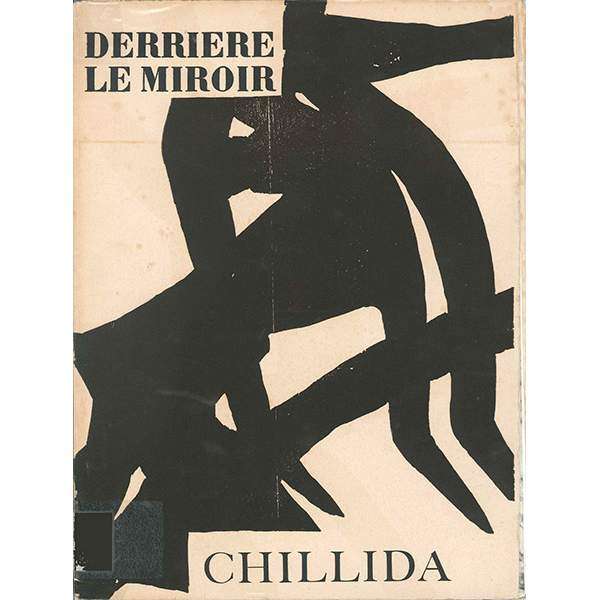
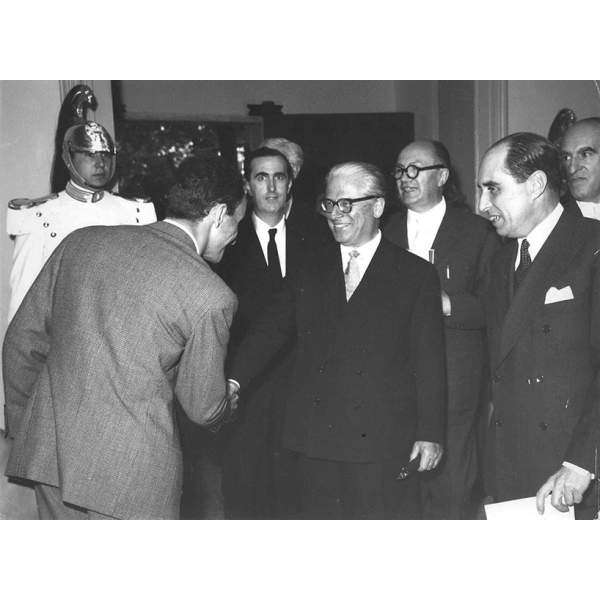
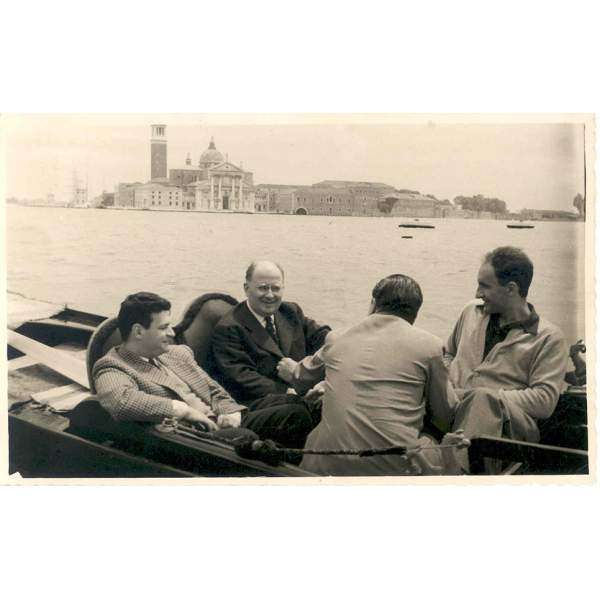
![Aizian [In the Wind]](/sites/default/files/styles/600x600/public/chillida_biografia_044.jpg?itok=Wfn-b4XO)
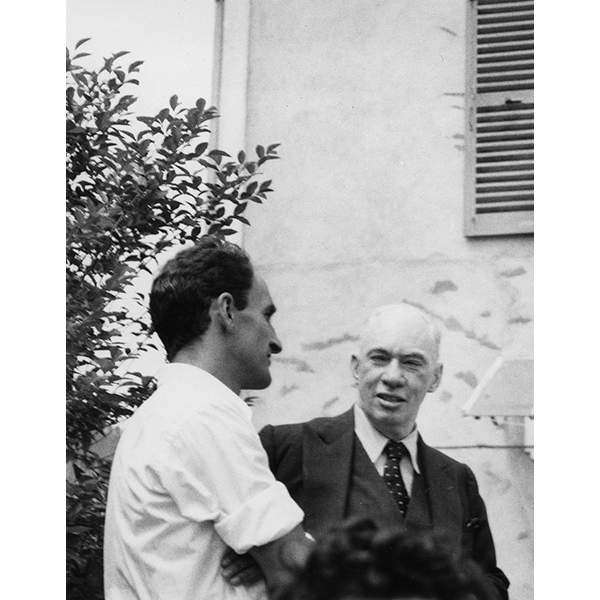
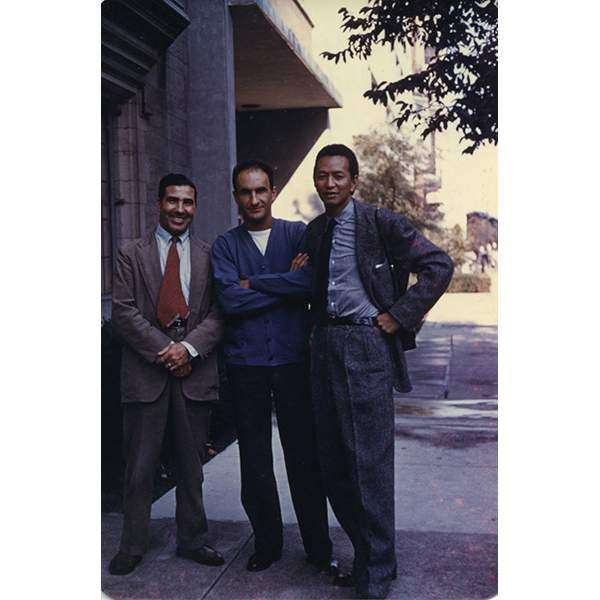
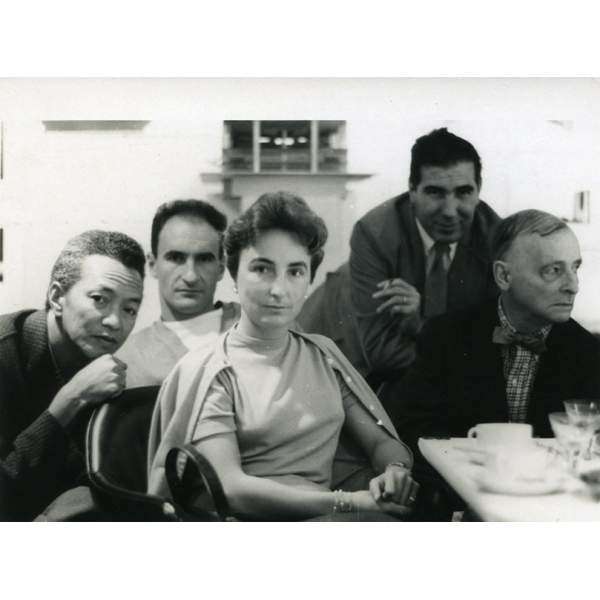
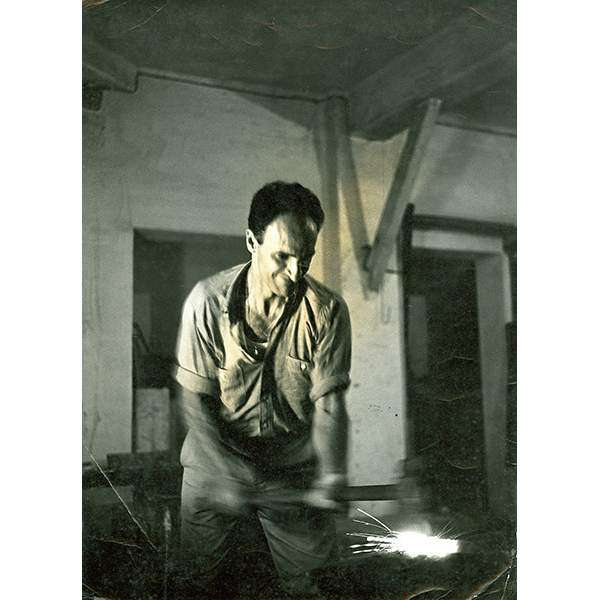
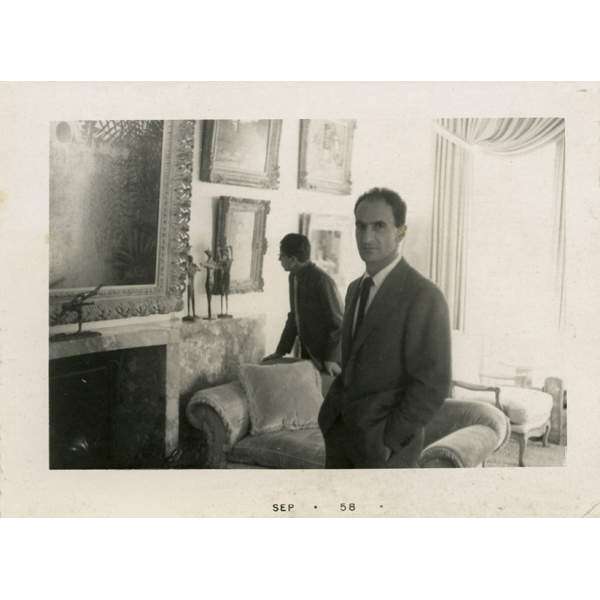
![Deslizamiento de límites I y II [Gliding of Limits I & II], his first series of etchings](/sites/default/files/styles/600x600/public/chillida_biografia_050.jpg?itok=CsBYl_f2)
